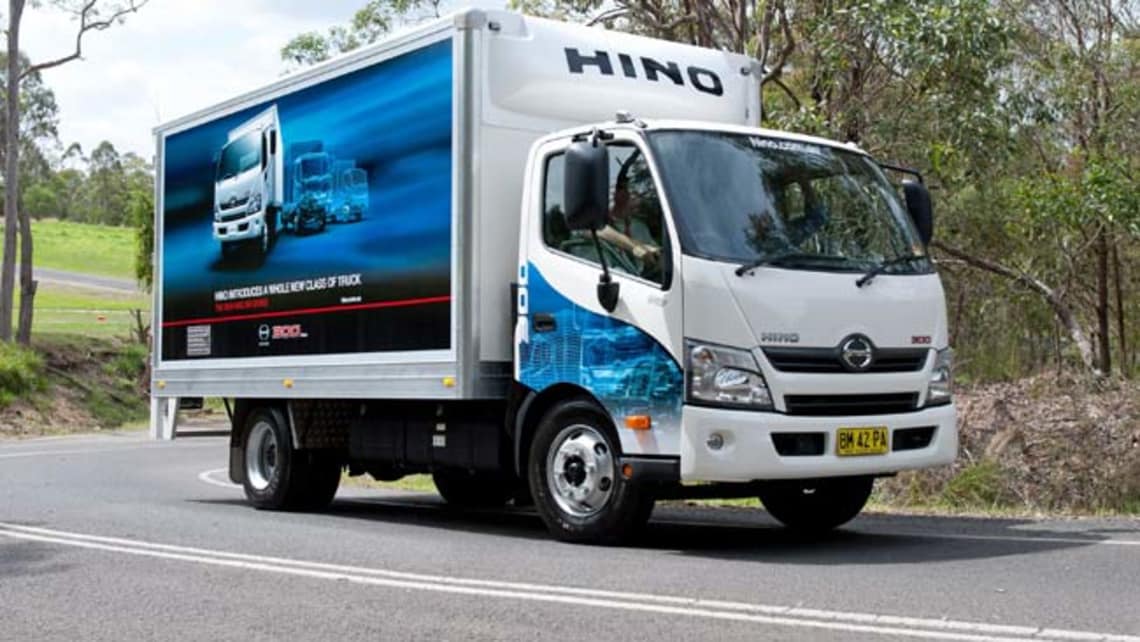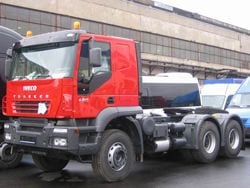
Hino 300 2011 Review
Sliding sideways in a truck is great fun in controlled environments like a diesel-splattered Mt Cotton body, but I never want to experience that on the road. Thankfully, companies like Hino are working to reduce the likelihood of drivers losing control of their trucks, starting with the new low-duty 300 series.
Working Wheels was able to test the new car at a driver training center on Mount Cotton in Queensland. The most dramatic driving experience of the day was the demonstration of electronic stability control in the wet. Hino is taking a big leap in terms of safety with the 300 series and includes ESC as standard on every model.
Eager to make their point, they hired rally ace Neil Bates to help guests experience driving the 300 Series on very slippery surfaces with and without ESC on. It was definitely a wild ride with the ESC off.
It was fun to slide in a controlled environment, with little strain on your back, and the spin didn't matter because there were a lot of oncoming cars. On the road, such a corkscrew can have fatal consequences.
The ESC system made a big impact as soon as it was included. The truck braked with individual wheels and muted the accelerator pedal to stay on course. It was wonderful. And yes, Neil was able to complete the figure-eight course faster with ESC on than when he was gliding without it.
On normal road loops, the ESC kicks in a little sooner than you might expect. I assume that some drivers may be annoyed by this because the system is quick to act in an attempt to prevent an incident.
Design
The ESC is the highlight of the new lineup, but the new wide cab is likely to appeal to drivers more. In fact, Hino designed this cab with relatively tall people in mind, instead of shaping it exclusively for shorter Japanese customers. The cabin is surprisingly spacious.
Getting in and out is easier thanks to a wider opening and opening doors, and plenty of legroom and overhead, which is a big plus for bigger people who would no doubt suffer in the latest model.
You can feel comfortable with a steering wheel that can be adjusted in and out as well as up and down. The driver's seat can also slide back and forth 240mm to make sure you
find a good job. It also has suspension, which was good during our test drive and would probably make life a lot easier for a driver working long hours on imperfect roads.
Visibility has been improved with new, thinner A-pillars. The standard cab has received only minor changes, missing the suspension seat and many other cab upgrades as it is a budget.
conscious model. The cockpit has also been upgraded.
They have a separate rear air conditioner for the back, which is handy, but the rear seat back is so uncomfortable that there will be fights over who gets to sit in the front.
TECHNOLOGY
Engineers have made minor changes to the 4.0-liter turbocharged four-cylinder diesel engine, which reaches 121 kW of power and 464 Nm of torque. There is no automated manual transmission here, a fully automatic transmission is used instead. It's okay, but nowhere near as good as the dual-clutch automatic transmission in the Canter Mitsubishi Fuso.
It took me a while to get used to the manual, but it could just be a driver bug and the fact that it's fresh out of the box. The real test for these trucks will be their operation, but the vastly improved wide cab interior and improved safety certainly make a good first impression.

